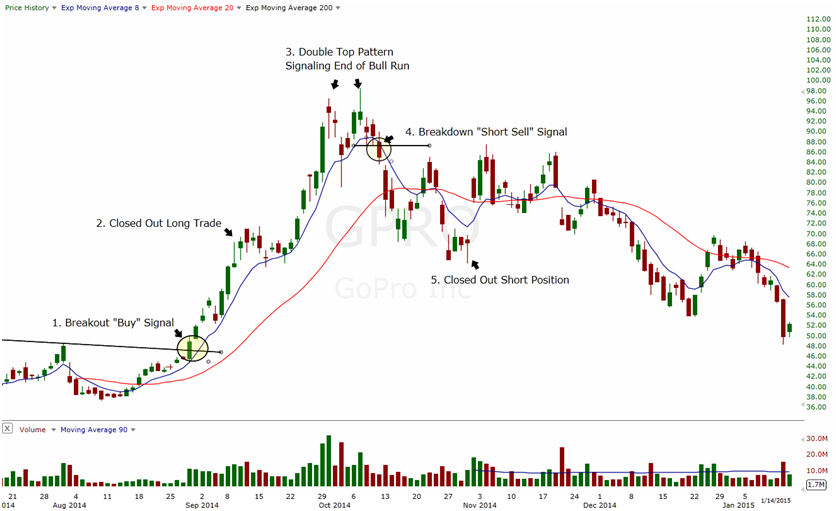Yesterday, my 7-year-old son Alex came into my office with an unopened GoPro (NASDAQ: GPRO) box. As soon as I saw it in his hands, he started with a barrage of questions:
quick tradesAlex: “What is this?”
Me: “It’s a video camera you attach to things”
Alex: “Can I open it”
Me: “Sure”
[ad#Google Adsense 336×280-IA]Alex: “Who gave it to you?”
Me: “Someone I helped out a while back – he sent it to me as a gift”
Alex: “How did you help him?”
Me: “I helped him with his stocks”
Alex: “OK, cool. …Can you open this for me?”
The GoPro camera was a thank you gift from one of my students who made a killing by trading GoPro stock right after its initial public offering.
You see, for the past five years, I’ve been teaching regular investors how to trade stocks and have been giving them actionable trade recommendations.
The recent encounter with my son reminded me of two specific trades. And they are great examples of how to trade some of the market’s fastest-moving stocks.
You’ll recall that GoPro went public in June 2014. Two months after the impressive IPO, I noticed a bullish pattern developing that piqued my interest. The stock was gearing up for a run higher and I was looking to buy a breakout from the base.
 On Aug. 28, 2014, I bought the stock at $47 per share (#1 on the above chart). The stock was finally breaking out from its basing pattern on good volume.
On Aug. 28, 2014, I bought the stock at $47 per share (#1 on the above chart). The stock was finally breaking out from its basing pattern on good volume.
From a story standpoint, the stock was “hot.” It was a cool new technology surrounded with a lot of hype and consumer demand. But that’s not why I bought it.
I bought it because the chart said buy.
It was the rapidly rising stock price – with strong trading volume – that told me NOW was the time to enter a position. As I’d expected, the stock kept moving higher.
I ended up selling my position just nine days later at around $70 per share – handing me 49% profit (#2).
Every trade should be that easy!
Shortly after I sold the position, the stock consolidated for a few days. It then continued its dramatic rise all the way up to just shy of $100 in early October.
The stock had more than doubled in just one month!
It’s great to be on the right side of a moon shot. But I knew from experience that the rapid rise would ultimately be GoPro’s demise. I’ve seen this situation unfold many times before.
After that initial peak around $100, the stock traded back and forth and ultimately made another attempt at new highs on Oct. 7, 2014.
However, it put in a big “topping tail” candlestick. This signaled that the buyers had basically run out of steam.
After the double-top pattern emerged (#3), I took another position in the stock. But this time I was looking to profit from a drop in the stock price.
On Oct. 10 – just three days after that failed attempt to trade higher – I “shorted” the stock at $90 per share (#4). You probably know that short selling is a way to profit from a decline in a company’s stock price.
Immediately following this short sale, GoPro stock rapidly declined. And just 15 days later, I was able to close out my short trade for a quick profit of 27% (#5).
Did I sell short because I thought the stock was overvalued?
The answer is no. I sold short because the chart said sell.
The bottom line is that I made two quick trades in GoPro stock. In total, I earned a 76% profit during the 24 days that I traded the stock.
As an active trader, I never fall in love with a stock.
When the chart says “buy,” I’ll buy a position. And when the chart says “sell,” I’ll sell my stock or initiate a short position.
I don’t care what the company does, what management says, or what Wall Street analysts think. All I care about is the story of the stock chart.
After trading stocks for 20 years, I’ve learned that the stock chart tells the story of money and the markets. I don’t need to read the quarterly earnings report to know whether the news was good or bad. The stock price movement tells me the entire story.
— Evan Lazarus
[ad#wyatt-generic]
Source: Wyatt Investment Research

